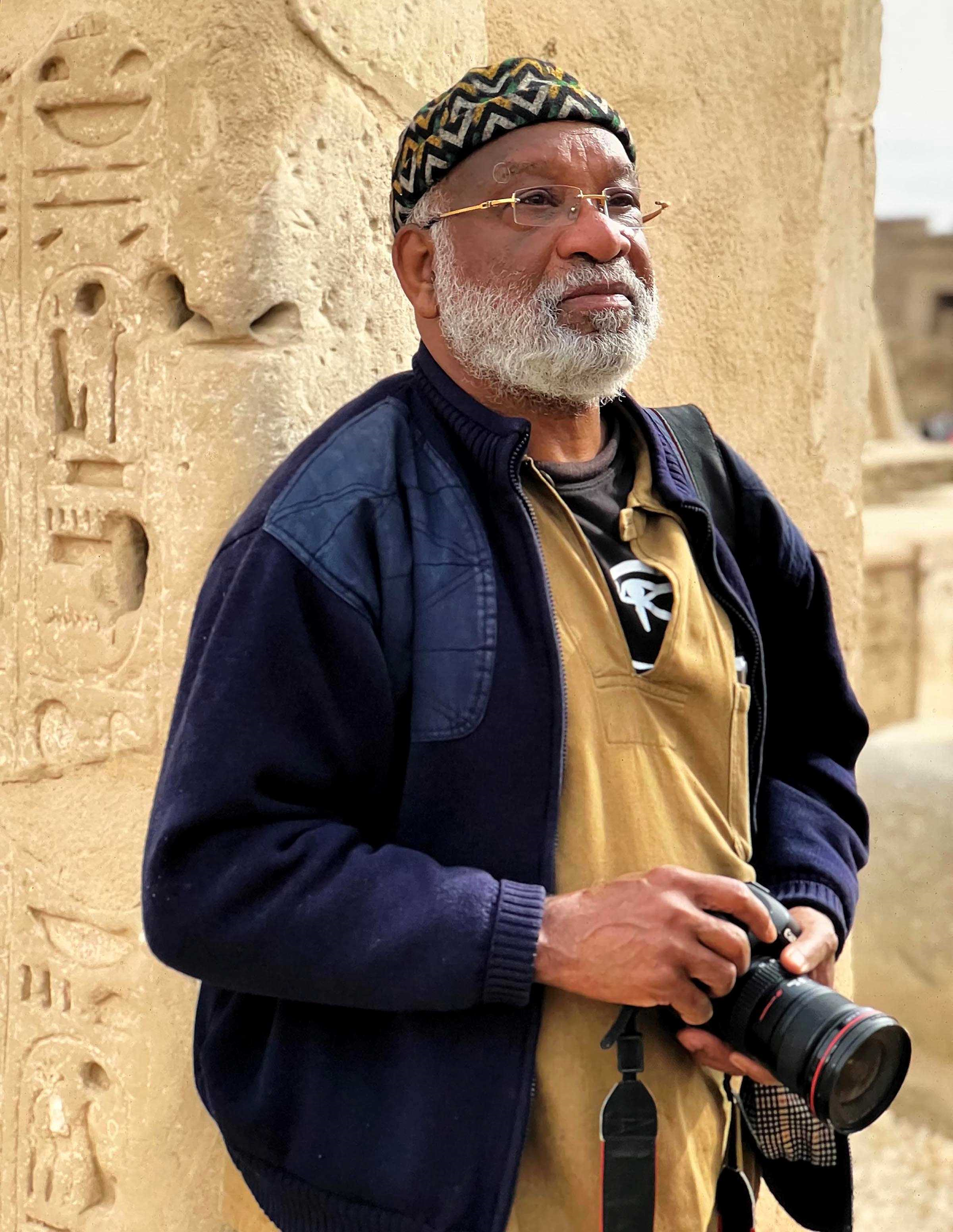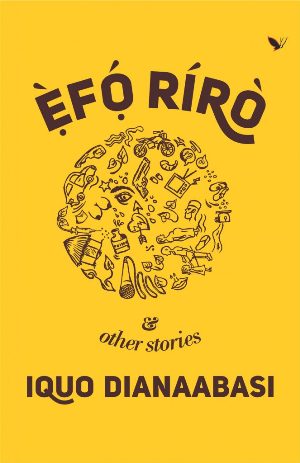
Patriarchy and Parenting in Post-Colonial Nigeria
A Review of Purple Hibiscus
Chimamanda Ngozi Adichie, has, in the words of one admirer, "a face to die for". She also has an enviably good mind and talent to burn as a writer. Born in 1977 in Enugu, South-East Nigeria, so well-received have her writings been, they have earned her an uncommon success as a writer anywhere in the world.
In 2015, the Swedish government provided a copy of her essay, We should all be Feminists to every 16 year old school child in the country. Adichie's books have won prestigious awards including in 2008, a MacArthur Genius Grant. In 2017, she gained entry into the American Academy of Arts & Sciences - the prestigious institution which this year admitted two more writers of Nigerian descent: Booker Prize Winning author of Girl, Woman, Other, Bernardine Evaristo and Teju Cole, photographer, art-historian and author of the acclaimed novel, Open City.
Amongst honours Purple Hibiscus, Adichie's novel received when it was published in the UK in 2003, is the Commonwealth Prize for Best First Book.
I was privileged in 2004 to attend a literary evening organized by Farafina the publisher of the Nigerian edition. The evening was held at The Yellow Chilli restaurant on Victoria Island, in Lagos where I live. It was a full house with plenty of good food and drink. Asha, a wild, musician, now based in Paris, supported the unknown and very young woman - she must have only been 23 at the time. Did any one of us have any inkling of the behemoth Chimamanda Ngozi Adichie was soon to become?

Looking back now, it is astonishing to me that it took my second reading of Purple Hibiscus to discover quite how remarkable this novel is. It is the work of a debut writer already at the height of her powers when she sat down to write it. Indeed, Chinua Achebe, a founding father of African literature, is credited with saying that Chimamanda Ngozi Adichie came fully made.
A very quick flash of political and religious history: In 1914 the Northern Nigerian Protectorate and the Colony and Protectorate of Southern Nigeria under the leadership of Governor-General Frederick Lugard, were amalgamated into one country to be known as Nigeria. Christianity, the faith I profess, and Islam have existed in my country since the middle ages but it was not until the 19th century, 1842 that the first mission of the Church of England was established in the South-Western coastal town of Badagry.

Over time more Christian organizations emerged at home and from overseas such as the Sudanese Interior Mission which, founded in Canada and the US in 1893, worked actively in the north of Nigeria. SIM partnered with colonial authorities to deliver health and social welfare interventions for people of the north who were largely adherents of Islam and animism. Christian practice is increasing. Christianity has grown so visible in the north as a consequence of missionary activity, that violent resistance to its practice continues to rise. The greatest violence towards Christianity is perpetrated by the group known as Boko Haram. Boko Haram is translated as: Western education is forbidden.
I am no historian and Purple Hibiscus is not a history book. And it is certainly not about the clash of Islam and Christianity. What I wanted to do with that quick flash is to provide a whiff of religious history to serve as backdrop - of sorts - for Adichie's powerful novel. It mirrors post-colonial Nigeria's struggle to find a place to call home in a cultural and religious war -zone.
In the patriarch, Eugene Achike, Adichie demonstrates how Christianity, when embraced, mis-interpreted and mis-applied by powerful local hierarchies, will perpetuate the epistemic violence unleashed by colonialists who sought to re-orient, re-configure and recreate pre-Christian Africa in the western image.
Papa Nnukwu, father of Eugene Achike, a proud and joyful adherent of the pantheist religion of his forefathers, blames the mission school of the colonial era for the monster his son has become. While relaying stories to his grandchildren about the harm perpetrated by missionaries, Papa Nnukwu needs to be reminded by his liberal, reasonable daughter Ifeoma that she attended the same mission school.
But the old man's views about his son are hard to dismiss. In the canon of modern African fiction, for his treatment of Papa Nnukwu who does not share his Christian beliefs; for his cruelty towards his family, in the name of Christianity, Eugene Achike will remain one of the most memorable casualties of the epistemic violence carried out by the colonizers of Africa as they imposed their world-view.
I searched online for a definition that would not only explain the phenomenon of Eugene Achike to me but shed light expertly on the interface of power-structures that provide the triggers for the human and ideological drama of the novel. The power-structures are: a family ruled by a tyrant; a nation under military rule; a university under a sole administrator.
Enrique Galván-Álvarez, a leading scholar of post-colonial studies and lay member of the Shin Buddhist Fellowship, UK, is quoted in the website, Epistemic Violence:
“(it is) violence exerted against or through knowledge,(it) is probably one of the key elements in any process of domination. It is not only through the construction of exploitative economic links or the control of the politico-military apparatuses that domination is accomplished, but also and, I would argue, most importantly through the construction of epistemic frameworks that legitimise and enshrine those practices of domination.”

If an objective of this book is to build a case to support the dignity of African cultural identity and to mourn the assault on that dignity, the scenes centering the Aro festival, are critical. We remember the trepidation of family members who knew that Eugene Achike would forbid a visit to the festival and we remember the joyful experience of the actual festival; how that joy contrasts so starkly with the family's earlier fear.
Ezi Icheke is full of people on the day of the festival; the place is vibrant with colour; people dressed as Agbogho mmuo - maiden spirits -are on parade. There is a mmuo wearing the mask of a grimacing human skull. Papa Nnukwu instructs the women to look away. I smile now thinking of the story I was recently told about my mother's female relation hiding in a barrel out-of-sight of alagemos who paraded the streets of our own home-town of Ijebu Ode Nigeria.

But here we are, on the pages of Purple Hibiscus, with Ifeoma, Papa Nnukwu and the children. We are in Igbo land, Ezi Icheke, South-East Nigeria. Everywhere hawkers are selling food and drink. I drink in the colours of these local scenes, seeing what all readers will see; what Ifeoma, a university lecturer sees; what her children and Papa Nnukwu see; and ultimately, what Jaja and Kambili see. Despite having been programmed by their father, to reject devilish folklore, they see it too: the beauty of rich, ancestral traditions.
[If Eugene Achike rejects the notion that Christianity can co-exist peacefully with customs which originate in our pantheist history, he is not alone. In my own small corner of Lagos, I watch with dismay as clerics and lay-believers with passionately held views, dismantle what they see as evil altars erected to pantheist gods.
Stripped of symbolic paraphernalia originating in traditional belief systems, look at how sterile our Yoruba baby naming ceremonies have become. The kola nuts, water, salt, honey, palm oil, dried fish, the pepper, all to wish the child well as he navigates the world, gone. All gone.]
Back home, Jaja and Kambili are silent about the Aro Festival where Agbogho Mmuo parade the streets. They are silent about spending time with Papa Nnukwu who is a heathen, an animist. Jaja and Kambili are always silent. We, the readers, see the children as they should be: far more frightened of their father than any of these.

Purple Hibiscus reads like a compendium of child rights violations. It is worth pointing out that 2003, the year it was published in the UK, is the year the Child Rights Act was passed in Nigeria. The CRA gives children agency as rights bearers and has been adopted by over 24 states in Nigeria, a nation of 36. Across several of its provisions - I have posted some on the screen - child abuse is explained and specific provision is made for the prosecution and punishment of criminals. Sanctions involve fines and jail term. Section 11 protects children from neglect, maltreatment, sexual abuse and torture and importantly recognizes the dignity of children - a necessary development in a cultural setting which can seem to promote the status and privileges of elders at the expense of the well-being of children. The 2003 Act outlines children's entitlements regarding protections to be afforded them by their parents and guardians from the foetal state through adulthood at 18 years.
[I rejoice that with CRA section 17, the unborn child has a right to protection from harm.]

But what we witness in Purple Hibiscus needs no explanation: a stark, hideous succession of crimes committed by one man against his living children. And by means of the violence he carries out against his wife, we see the same monster kill his unborn children. The child rights laws straddle the life/survival of children, their development, their participation in the world around them and their protection. If you look at the father's treatment of his own children through the lens of these laws passed decades after he lived and died (too slowly), the case for the prosecution is unassailable.
[I am aware of that there is a UNiTE movement against gender based violence spearheaded by the Secretary-General of the United Nations but I know very little about this field and am therefore not in a position to explore the subject here]

INTERVIEW WITH JULEUS GHUNTA, EXPERT IN ADVERSE CHILDHOOD EXPERIENCES

You talk about ACEs being more prevalent in the global south. Why is that?
“ There are critical issues like punitive approaches to rearing children that we also see in wealthy families, that we see even in wealthy schools. Religious ideas about not sparing the rod and spoiling the child have legitimised physical and emotional abuse too. But, for me, poverty is the most damaging ACE because it opens the way for so many dysfunctions and maladjustments.”

I shudder to think about the Kambili's trajectory through life post-Purple Hibiscus.What would it look like?
“Kambili's attachment to her father is a kind of trauma bonding. Most children feel strong connections to their parents. It's hard for them to detach - especially when they are really young - even in cases where they are subjected to indescribable cruelty. There is always this hope that light will come, that they will be loved. When many abused children become adults, they marry their abusers (so to speak). Men who remind them of their abusive fathers, women who remind them of the abusive mothers and so on. It sounds counterintuitive but really makes sense when we think about how trauma damages that part of the brain (prefrontal cortex) that is responsible for executive functioning like making rational choices. They go for what is familiar and it's hard to stop. It is not because they are weak or stupid.”
“If she receives long-term help, therapy, and an opportunity to physically relocate from the place where she was abused to one that is safe, she'll likely heal and even excel. There's hope, even with horrific cases like hers.
If she does not heal, she'll either retreat (even more) into herself, practice self-harm, endure numerous illnesses or become a menace to her family, peers and society. Or all these things at the same time. But even then, unless she becomes terminally ill, I wouldn't say she is irreparably damaged.”

As an expert in ACEs, how do you respond to what I have told you about the novel?
“In one of her interviews about her book God Help the Child, the late American novelist Toni Morrison spoke about ‘a little thread of poison’ that is in all of us. For the abused child, like Kambili, it is often more than a thread and more like a sheet. It is good to see that Nigeria is taking this issue seriously, at least as it relates to legislation. But of course, that has never been sufficient. It would help if Nigerians have a deeper understanding of the impacts and implications of childhood adversity, but even then, Nigeria's structural violence and socio-economic inequities would result in millions of children's lives being filled with turmoil and hopelessness. That's the harsh reality, the damage is deep, but we should remain hopeful.”


What can be done to prevent ACEs in families?
“We need to educate families about the causes and consequences of ACEs in language that makes sense to them. If people don't understand the issues, we shouldn't expect them to move away from traditional ideas regarding what constitutes good parenting (e.g. FGM, physical abuse). We can't change what we don't understand. Awareness is usually not enough though. Most families don't simply choose to be terrible to each other. They are wired this way after years of intergenerational trauma. Grandparents, parents, uncles, aunts need help too, not just children. Sometimes it is really hard for those who live in despair to change their approaches to life. So, it's important that people have opportunities, like viable work, so that they'll be able to live with dignity. Most violence comes from what Dr James Gilligan refers to as 'intolerable and self-destroying intensities of shame'. We need to find ways to reduce the prevalence of chronic shame that is linked to extreme poverty and marginalisation in families and groups in the wider society.”
[In this conversation, if neither Juleus nor I talk about the boy, Jaja, the reason is that ACEs and the boy child are thoroughly addressed by Juleus Ghunta and his peers during a panel discussion held to mark The Day of the Boy Child on May 16th 2021. I have put this link and links to other useful resources at the end of this paper.]

CLOSING
Purple Hibiscus is an urgent reminder of the Biblical axiom: wherever the Spirit of God is, there is liberty. Let's turn it the other way round: wherever there is liberty, there, is the Spirit of God. The God whose name means Love. 17 year old Jaja and 15 year old Kambili, victims over their lifetimes of the hate and madness of their father, are given a taste of freedom and love in the home of Ifeoma, their father's sister and in the company of their grandfather, Papa Nnukwu.
I hope there is a sequel to Purple Hibiscus so that we can learn not more about hate from Chimamanda Ngozi Adichie but about the kind of healthy, consistent, unconditional love needed to heal the Jajas and Kambilis in our societies and about the availability of people within and outside the family who can and are willing to provide it.
RESOURCES
- Panel discussion The Day of the Boy Child
- Ted talk by Dr. Nadine Burke Harris How childhood trauma affects health across a lifetime
- Olatoun Gabi-Williams talks to Juleus Ghunta, author, Tata and the Big Bad Bull
This review was presented at the inauguration of LITERATURE: A Mirror of Society - monthly literary evenings hosted by United Nations Women's Association New Delhi (UNWA) on 11th June 2021.




